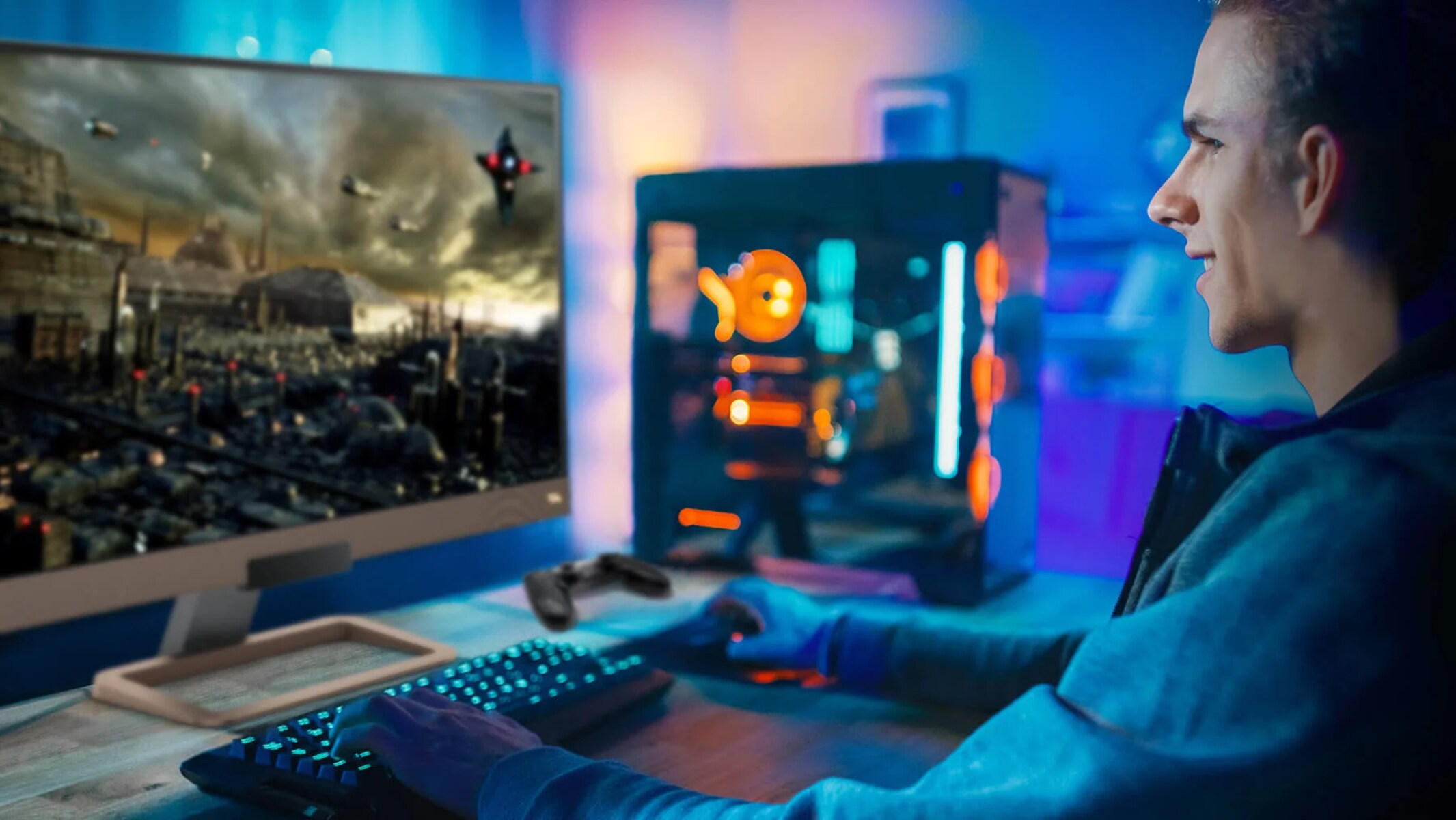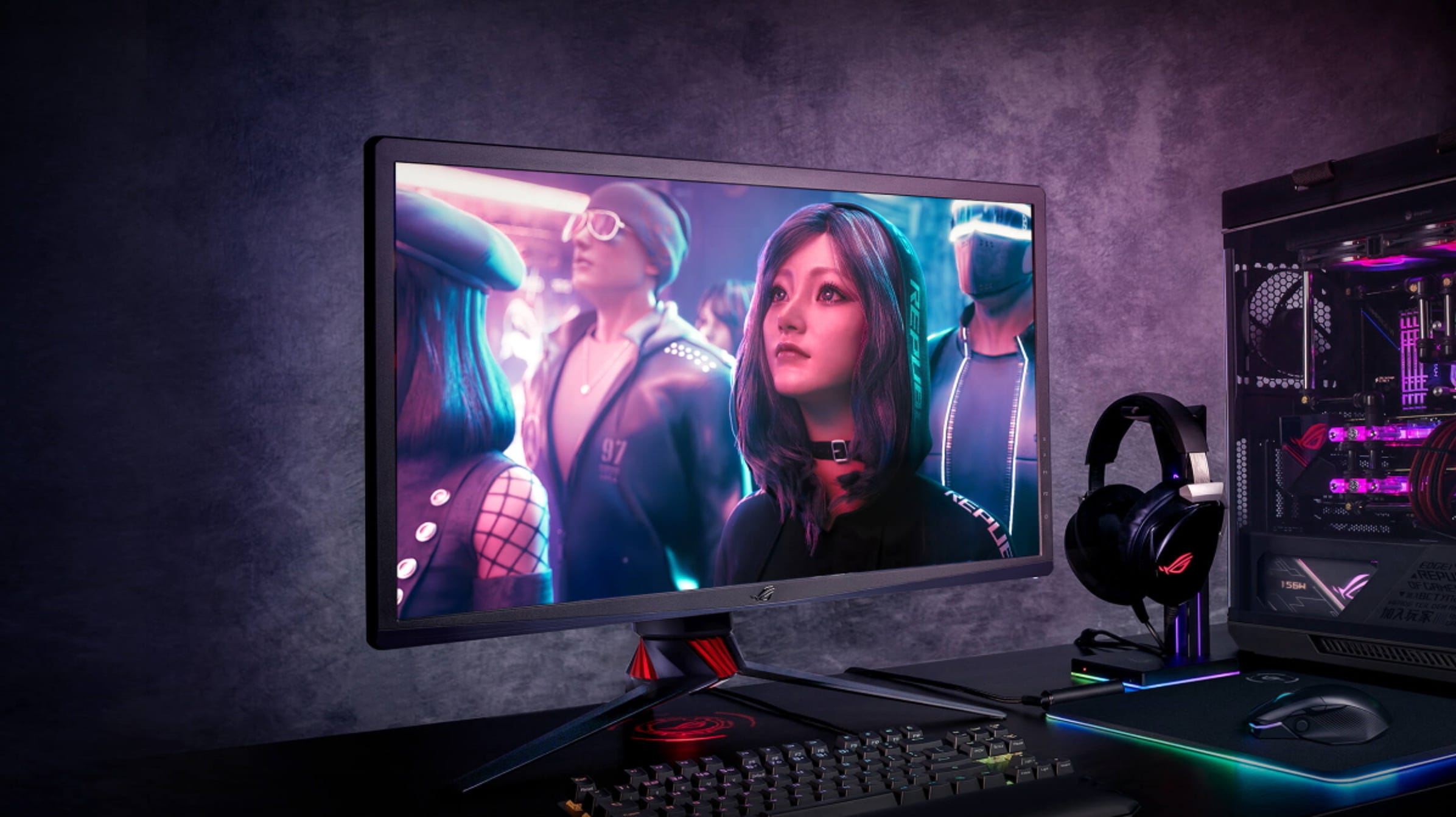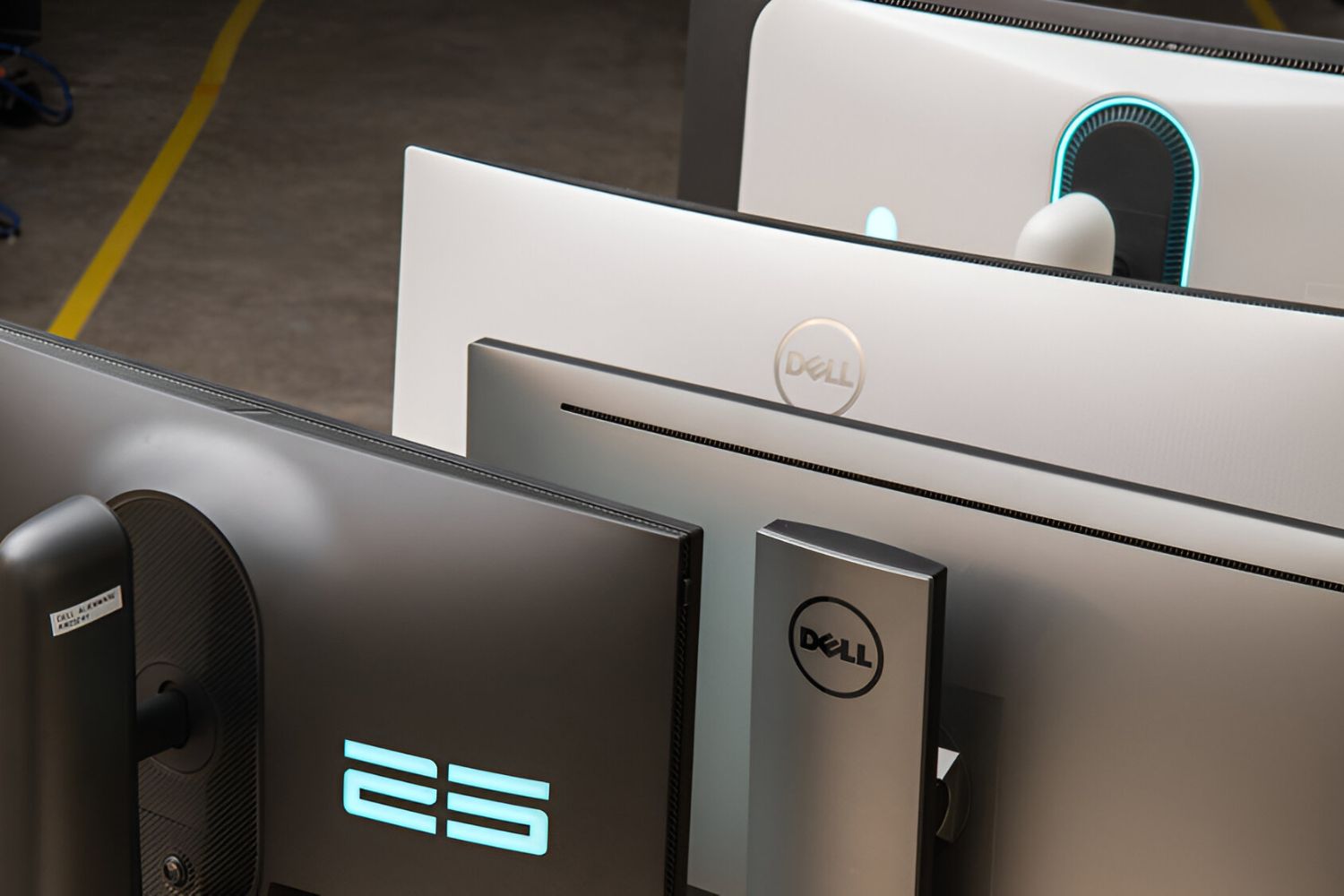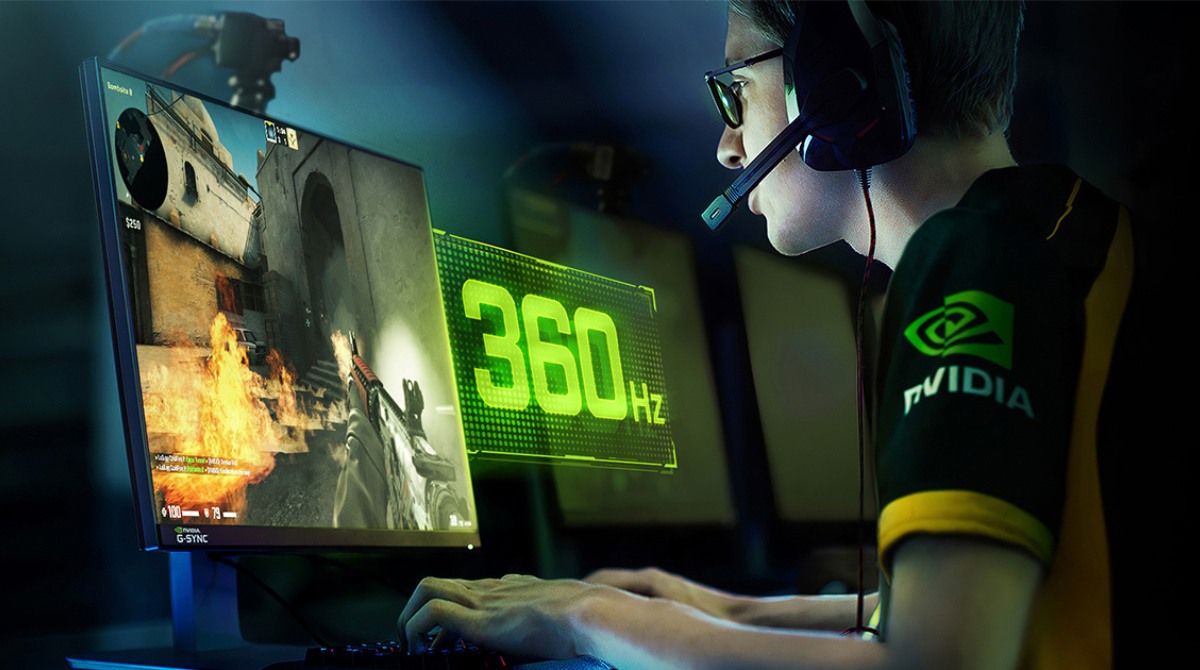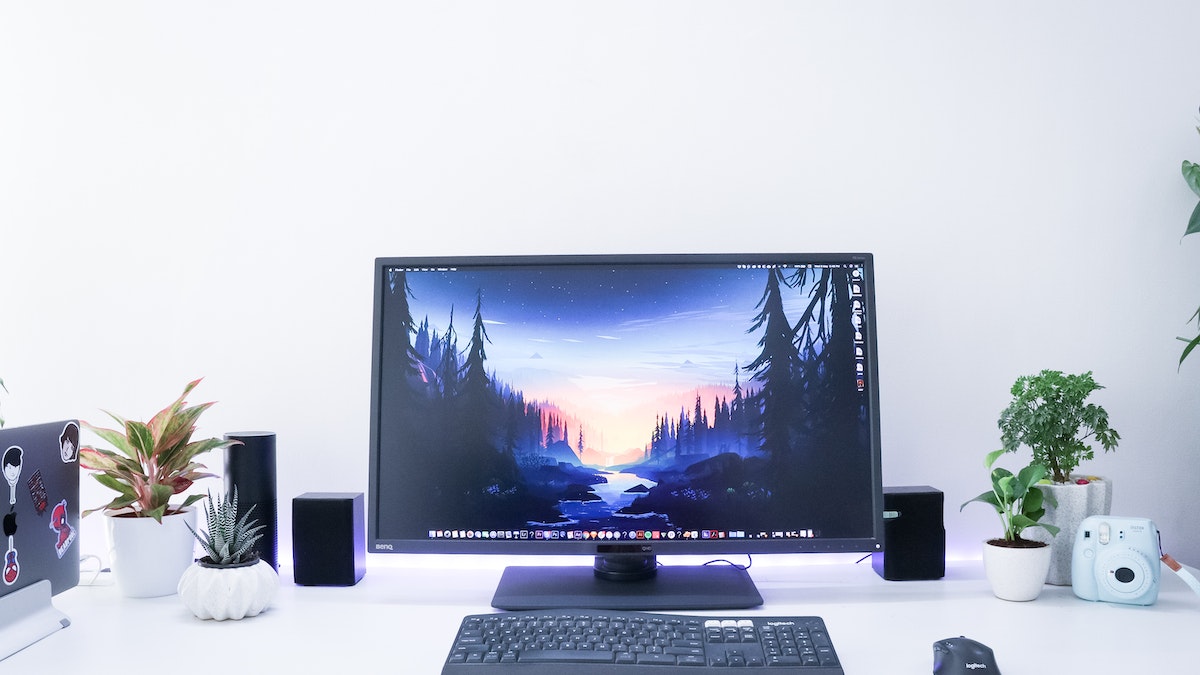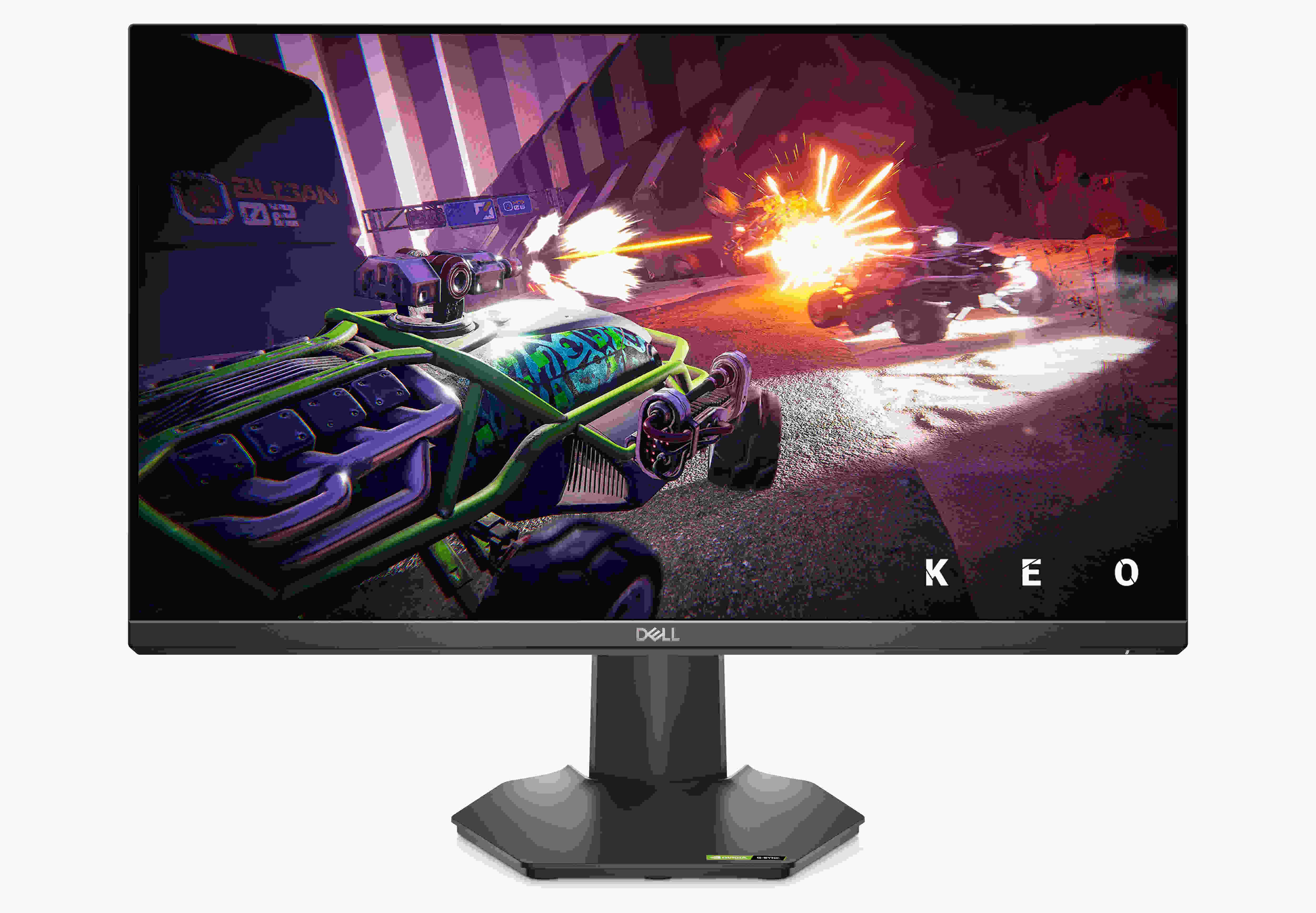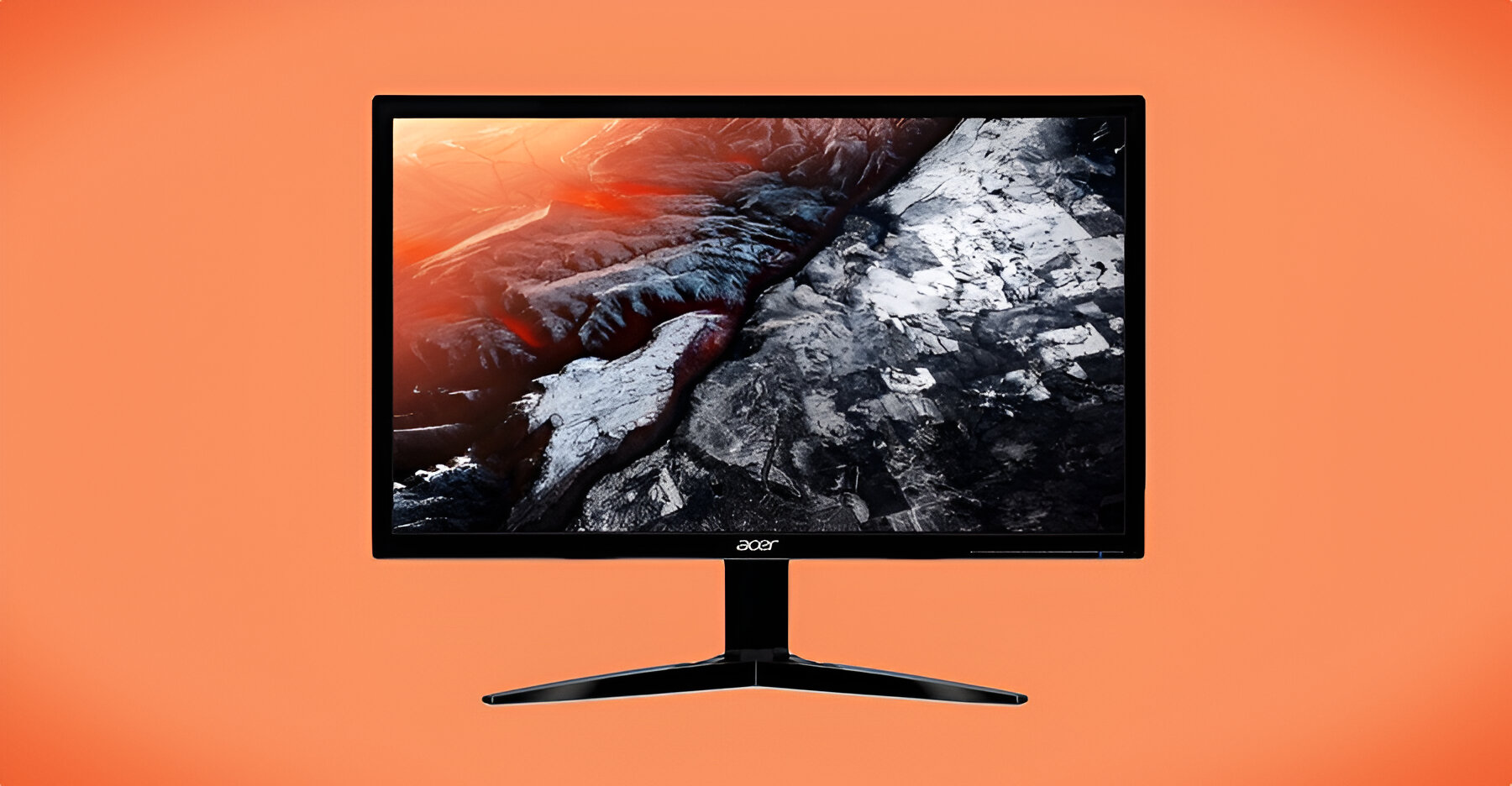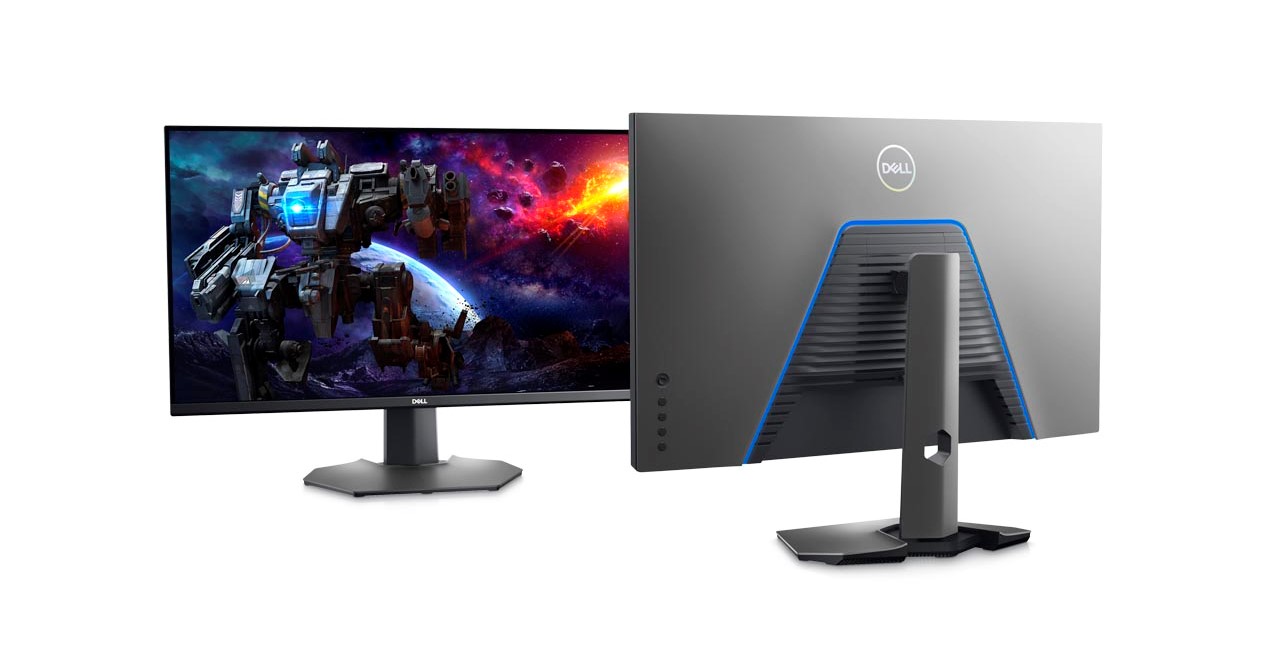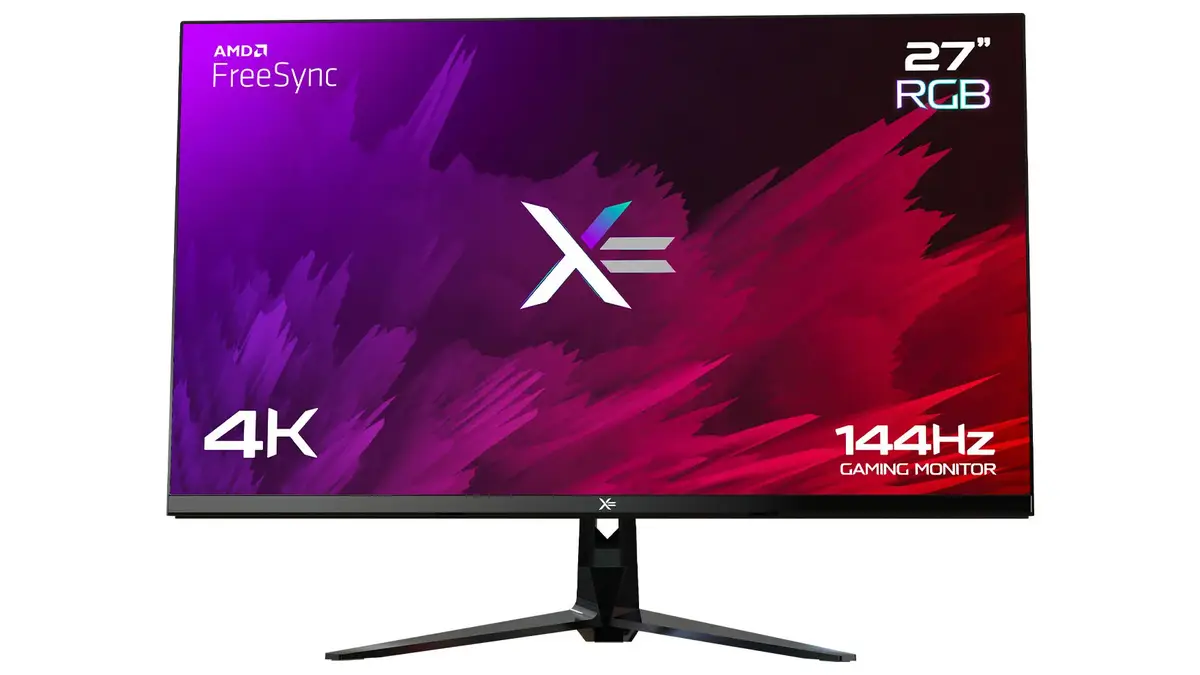The Importance of Refresh Rate in Gaming Monitors
Gaming monitors have come a long way in recent years, with technological advancements allowing for stunning visuals and immersive gameplay experiences. One crucial aspect that often goes overlooked, but can significantly enhance the gaming experience, is the refresh rate of the monitor.
What is refresh rate?
Refresh rate refers to the number of times the monitor updates the image on the screen per second, measured in hertz (Hz). The higher the refresh rate, the more times the screen refreshes, resulting in smoother motion and reduced motion blur.
How does refresh rate affect gaming?
A higher refresh rate improves the fluidity and responsiveness of images on the screen, especially during fast-paced gaming moments. It allows for more accurate tracking of moving objects, giving gamers that split-second advantage to react swiftly and improve their gameplay.
Moreover, a higher refresh rate can make a significant difference in reducing eye strain during long gaming sessions. The smoothness of the image on the screen provided by a high refresh rate allows for a more comfortable and enjoyable gaming experience.
Finding the perfect balance
While a higher refresh rate offers benefits, it’s essential to find the right balance based on your hardware and the games you play. While some gamers may prioritize a higher refresh rate for quick, competitive games, others may prefer a balance between refresh rate and resolution for visually stunning single-player games.
Common refresh rates in gaming monitors
The most common refresh rates in gaming monitors are 60Hz, 120Hz, and 144Hz. 60Hz is the standard refresh rate found in most monitors, providing smooth gameplay for casual gamers. However, many gamers prefer the increased smoothness offered by 120Hz or 144Hz monitors, especially for fast-paced games.
Is higher always better?
While higher refresh rates can improve gameplay, it’s important to note that attaining high refresh rates requires a capable graphics card and a powerful gaming rig. A monitor with a refresh rate that your hardware cannot fully utilize may not provide noticeable benefits.
Achieving smooth gameplay with adaptive sync technologies
Adaptive Sync technologies, such as AMD FreeSync and NVIDIA G-Sync, are additional features that can synchronize the refresh rate of the monitor with the graphics card, eliminating screen tearing and providing even smoother gameplay. These technologies significantly enhance the gaming experience by reducing input lag and improving overall visual quality.
Monitor considerations for different types of games
For competitive and fast-paced games, a higher refresh rate monitor, such as 144Hz, can give you an edge by allowing you to react faster to your opponents’ movements. On the other hand, for visually stunning single-player games, a balance between refresh rate and resolution can deliver breathtaking visuals without sacrificing too much smoothness.
Ultimately, the choice of refresh rate depends on personal preference, the types of games you play, and the capabilities of your gaming system. It’s essential to experiment and find the best configuration that meets your needs.
By considering the importance of refresh rate and finding the right balance, you can elevate your gaming experience to new heights, immersing yourself in a world of smooth, responsive, and visually stunning gameplay.
What is Hz?
When it comes to gaming monitors, you may have heard the term “Hz” mentioned frequently, but what exactly does it mean? Hz, short for hertz, refers to the refresh rate of a monitor and represents the number of times the screen updates its image per second.
Think of Hz as the heartbeat of your monitor. A higher refresh rate means a faster heartbeat, resulting in more frequent updates of the displayed image. This, in turn, leads to smoother transitions between frames and a more fluid gaming experience.
Refresh rate is measured in terms of hertz (Hz). The most common refresh rates in gaming monitors are 60Hz, 120Hz, and 144Hz, although higher options like 240Hz and 360Hz are also available for those seeking the pinnacle of smoothness.
A 60Hz monitor updates the image 60 times per second, while a 120Hz monitor updates it 120 times per second. Likewise, a 144Hz monitor updates the image 144 times per second. The higher the refresh rate, the more times the monitor refreshes the image, resulting in smoother motion and reduced motion blur.
For gaming, a higher refresh rate can make a noticeable difference. When playing fast-paced games that involve quick movements, such as first-person shooters or racing games, a higher refresh rate can help reduce input lag and provide a more responsive experience. It allows for more accurate tracking of moving objects, giving gamers a split-second advantage to react swiftly and improve their gameplay.
Furthermore, a higher refresh rate can contribute to a more comfortable gaming experience by reducing eye strain. The smoothness of the image transitions provided by a higher refresh rate can prevent the fatigue caused by flickering or stuttering visuals that might occur on lower refresh rate monitors.
It’s worth noting that to take full advantage of a higher refresh rate monitor, you’ll need a capable graphics card and a powerful gaming rig that can consistently deliver a high frame rate. In other words, your gaming system needs to be able to keep up with the monitor’s refresh rate to fully capitalize on the benefits it offers.
In summary, Hz refers to the refresh rate of a monitor and determines how many times the screen updates its image per second. A higher refresh rate can result in smoother motion, reduced motion blur, more responsive gameplay, and reduced eye strain. However, it’s important to ensure that your gaming system can handle the higher refresh rate to fully experience these benefits.
How Does Refresh Rate Affect Gaming?
The refresh rate of a gaming monitor plays a crucial role in determining the overall gaming experience. It has a direct impact on how smoothly the visuals are displayed and how responsive the gameplay feels. Understanding how refresh rate affects gaming can help you make informed decisions when choosing a monitor for your gaming setup.
One of the main ways refresh rate affects gaming is by improving the fluidity of motion on the screen. A higher refresh rate means more frequent updates of the displayed image, resulting in smoother transitions between frames. This is particularly noticeable in fast-paced games where quick movements and rapid changes occur frequently. With a higher refresh rate, the screen can keep up with the fast-paced action, reducing motion blur and providing a more immersive gaming experience.
In addition to smoother visuals, a higher refresh rate can also greatly enhance the responsiveness of the gameplay. The increased number of updates per second allows for more accurate tracking of moving objects, giving gamers a competitive edge by providing a split-second advantage to react quickly and make precise movements. Whether it’s aiming at targets in a first-person shooter or maneuvering through tight corners in a racing game, a higher refresh rate can make a noticeable difference in terms of accuracy and overall performance.
Another aspect to consider is the reduction of input lag that comes with a higher refresh rate. Input lag refers to the delay between when a player inputs a command and when it is registered and reflected on the screen. A higher refresh rate can help to minimize this delay, resulting in a more immediate response to player input and a smoother gaming experience. This can be especially important in highly competitive gaming scenarios where split-second decisions play a critical role.
Furthermore, a higher refresh rate can contribute to a more comfortable gaming experience by reducing eye strain. When the image on the screen updates more frequently, the transitions between frames appear smoother and more natural to the eye. This can help prevent the unpleasant visual artifacts that may occur on lower refresh rate monitors, such as screen tearing or stuttering visuals. By reducing these visual distractions, a higher refresh rate can allow gamers to effectively focus on the game without experiencing discomfort or fatigue.
However, it’s important to note that the benefits of a higher refresh rate are most noticeable in fast-paced games. For slower-paced games that prioritize stunning visuals or cinematic experiences, a higher resolution or other display features may be more important than a higher refresh rate. Finding the right balance between refresh rate, resolution, and other display technologies is essential to tailor your gaming experience to your preferences and gaming style.
In summary, refresh rate significantly impacts gaming by improving the fluidity of motion, enhancing responsiveness, reducing input lag, and reducing eye strain. A higher refresh rate can provide a smoother and more immersive gaming experience, particularly in fast-paced games. However, it’s important to consider other factors, such as resolution and display technologies, to find the right balance for your specific gaming needs.
Finding the Perfect Balance
When it comes to choosing the optimal refresh rate for your gaming monitor, finding the perfect balance is key. It involves considering various factors, such as your gaming preferences, hardware capabilities, and the types of games you play. By striking the right balance, you can maximize your gaming experience and achieve the best possible performance.
One important consideration is your gaming style and preferences. Are you primarily a competitive gamer who prioritizes fast and responsive gameplay? Or do you prefer visually stunning single-player games that prioritize graphics and immersion? Knowing your gaming preferences can help guide you in determining the ideal refresh rate.
For competitive and fast-paced games that require quick reflexes and precise movements, a higher refresh rate, such as 144Hz or even 240Hz, can provide an edge. The added smoothness and responsiveness can make a noticeable difference in your ability to track fast-moving objects and react swiftly. This can be particularly advantageous in first-person shooters, racing games, and other genres where split-second decisions and actions are crucial.
On the other hand, if you prioritize stunning visuals and immersive experiences, a balance between refresh rate and resolution may be more appropriate. While a higher refresh rate can improve gameplay, it may come at the expense of resolution or graphical fidelity. In this case, opting for a monitor with a lower refresh rate but a higher resolution, such as a 4K display, can provide a visually impressive gaming experience without sacrificing too much smoothness.
Additionally, it’s essential to consider your hardware capabilities. To fully benefit from a higher refresh rate, you need a capable graphics card and a powerful gaming rig that can consistently deliver a high frame rate. If your hardware cannot keep up with the monitor’s refresh rate, you may not fully realize the benefits of a higher refresh rate and may be better off with a monitor that aligns with your system’s capabilities.
Another factor to take into account is the types of games you play. Some genres, such as fast-paced shooters or esports titles, can greatly benefit from a high refresh rate monitor. However, if you mostly play slower-paced games, such as strategy or simulation games, a higher refresh rate may not be as critical, and other display features, such as color accuracy or ultrawide aspect ratio, may be more important for your gaming experience.
In summary, finding the perfect balance in refresh rate involves considering your gaming style, hardware capabilities, and the types of games you play. For competitive and fast-paced games, a higher refresh rate can provide a significant advantage, while a balance between refresh rate and resolution may be more suitable for visually stunning single-player games. It’s crucial to align your monitor choice with your preferences and hardware capabilities to ensure optimal performance and an immersive gaming experience.
Common Refresh Rates in Gaming Monitors
When it comes to gaming monitors, there are several common refresh rates that you’ll come across in the market. Each has its own benefits and considerations, and understanding these refresh rates can help you make an informed decision when choosing your gaming monitor.
The most common refresh rate found in gaming monitors is 60Hz. This means that the screen updates the image 60 times per second, providing a smooth viewing experience for casual gaming. While 60Hz monitors are considered the standard and can deliver satisfactory performance for many games, they may struggle to keep up with the demands of fast-paced, competitive gaming.
For gamers seeking a smoother and more responsive experience, there are higher refresh rate options available. One popular choice is the 120Hz monitor, which updates the image 120 times per second. This increased refresh rate results in reduced motion blur and improved clarity during fast-paced gameplay. It can provide a noticeable advantage in competitive gaming, allowing for more accurate tracking of moving objects and faster response times.
Another step up is the 144Hz monitor, offering an even higher refresh rate of 144 times per second. This refresh rate has become increasingly popular among gamers looking for the ultimate smoothness and responsiveness. A 144Hz monitor can deliver a remarkably fluid gaming experience, particularly in fast-action games where every split-second counts. The reduced motion blur and improved clarity can make a significant difference in gameplay, helping gamers stay one step ahead of their opponents.
Beyond 144Hz, there are even higher refresh rate options available, such as 240Hz and 360Hz. These extremely high refresh rates are designed for professional esports gamers or those who demand the absolute pinnacle of smoothness and responsiveness. While they offer the smoothest gameplay experience available, it’s important to note that achieving such high refresh rates is demanding on both the monitor and your gaming hardware. To fully benefit from these refresh rates, you’ll need a powerful graphics card and a capable gaming system.
It’s worth mentioning that the benefits of higher refresh rates are most noticeable in fast-paced games and genres that require quick reactions and precise movements. If you primarily play slower-paced games or prioritize stunning visuals, a higher refresh rate may not be as critical for your gaming experience.
In summary, common refresh rates in gaming monitors include 60Hz, 120Hz, and 144Hz, with even higher options available for those seeking the pinnacle of smoothness. Higher refresh rates, such as 120Hz and 144Hz, can deliver smoother motion, reduced motion blur, and improved clarity during fast-paced gaming. However, it’s important to consider your gaming preferences, the types of games you play, and your hardware capabilities when deciding on the ideal refresh rate for your gaming monitor.
Is Higher Always Better?
When it comes to the refresh rate of gaming monitors, the question often arises: is higher always better? While a higher refresh rate can bring advantages to gamers, it’s important to consider several factors before assuming that a higher refresh rate is always the best choice.
Firstly, achieving higher refresh rates requires a capable graphics card and a powerful gaming rig. If your hardware cannot consistently deliver a high frame rate to match the monitor’s refresh rate, you may not fully experience the benefits of a higher refresh rate. In this case, investing in a monitor with a refresh rate that aligns with your hardware’s capabilities may be a wiser choice to ensure smooth gameplay.
Additionally, the benefits of a higher refresh rate are most noticeable in fast-paced games. If you primarily play slower-paced games that prioritize stunning visuals and immersive experiences, a higher resolution or other display features may be more important to you than a higher refresh rate. Finding the right balance between refresh rate, resolution, and other display technologies is key to optimizing your gaming experience.
Another consideration is the diminishing returns that come with higher refresh rates. While the difference between 60Hz and 120Hz is quite noticeable, the difference between 120Hz and 240Hz may not be as significant to the average gamer. The perceived smoothness and responsiveness may become less distinguishable as the refresh rate increases, and the benefits may not justify the additional cost.
It’s also important to note that not all games are optimized for higher refresh rates. Some older games or less demanding titles may not fully utilize a higher refresh rate and may not provide a tangible improvement in gameplay. Therefore, it’s crucial to research the compatibility of games with higher refresh rates before making a decision.
Lastly, while a higher refresh rate can enhance the gaming experience, it’s not the only factor that contributes to overall performance. Other aspects, such as input lag, response time, and color accuracy, also play significant roles. It’s essential to consider these factors in conjunction with refresh rate when choosing a gaming monitor.
In summary, a higher refresh rate can bring advantages to gaming, such as smoother motion, reduced motion blur, and increased responsiveness. However, it’s important to consider hardware capabilities, game compatibility, diminishing returns, and other factors when determining if a higher refresh rate is always better. Finding the right balance based on your gaming preferences, hardware capabilities, and game requirements will help you make the most informed decision when choosing a gaming monitor.
Achieving Smooth Gameplay with Adaptive Sync Technologies
When it comes to achieving smooth and tear-free gameplay on gaming monitors, adaptive sync technologies play a crucial role. These technologies, such as AMD FreeSync and NVIDIA G-Sync, help eliminate screen tearing and provide a seamless gaming experience by synchronizing the refresh rate of the monitor with the graphics card.
Traditionally, screen tearing occurs when the graphics card and the monitor are out of sync. This happens when the graphics card renders frames at a different rate than the monitor refreshes them, resulting in visible tearing and disjointed visuals. Adaptive sync technologies solve this issue by dynamically adjusting the refresh rate of the monitor to match the frame rate output by the graphics card.
AMD FreeSync and NVIDIA G-Sync are the two prominent adaptive sync technologies available in the market. While the core principle remains the same, there are some differences between the two technologies. FreeSync is an open standard supported by AMD graphics cards, allowing compatible monitors to work seamlessly without additional licensing fees. On the other hand, G-Sync is a proprietary technology developed by NVIDIA, which requires monitors with a dedicated G-Sync module.
Both FreeSync and G-Sync effectively address screen tearing, but they also provide additional benefits. One of the key advantages is a reduction in input lag. By synchronizing the graphics card and the monitor’s refresh rate, adaptive sync technologies help minimize input lag, resulting in more immediate and responsive gameplay. This is particularly important for competitive gaming, where even the slightest delay can make a significant difference.
Adaptive sync technologies also contribute to smoother gameplay by eliminating micro stuttering. Micro stuttering refers to the irregular frame pacing that can occur when the frame rate fluctuates within a certain range. The dynamic adjustment of the monitor’s refresh rate with adaptive sync helps ensure that frames are displayed consistently, providing a smoother visual experience free from jarring stuttering or hitches.
It’s worth noting that to take full advantage of adaptive sync technologies, you need a compatible graphics card and a monitor that supports the specific technology (FreeSync or G-Sync). These technologies require a DisplayPort connection for optimal performance, so it’s essential to ensure that your graphics card and monitor have the necessary ports.
In summary, adaptive sync technologies such as AMD FreeSync and NVIDIA G-Sync are instrumental in achieving smooth and tear-free gameplay on gaming monitors. By synchronizing the refresh rate of the monitor with the graphics card, these technologies eliminate screen tearing, reduce input lag, and minimize micro stuttering. However, it’s important to have a compatible graphics card and monitor that support the specific technology to fully benefit from adaptive sync. Investing in a monitor with adaptive sync capabilities can greatly enhance your gaming experience and provide a seamless and immersive gameplay environment.
Monitor Considerations for Different Types of Games
When it comes to gaming monitors, different types of games have unique requirements and considerations. Adjusting your monitor choice based on the genre and gameplay style can greatly enhance your gaming experience. Let’s explore some important factors to consider when selecting a monitor for different types of games.
Fast-Paced Competitive Games: For competitive games like first-person shooters (FPS) or multiplayer online battle arenas (MOBAs), responsiveness and smoothness are crucial. A high refresh rate monitor, such as 144Hz or even 240Hz, can provide quick, fluid motion that allows for precise aiming and rapid reaction times. Additionally, a low input lag and fast pixel response time are important to minimize delay and motion blur, respectively.
Immersive Story-Driven Games: Story-driven games, such as role-playing games (RPGs) or adventure games, often prioritize stunning visuals and immersive experiences. Consider a monitor with a higher resolution, such as 4K or ultrawide, to fully enjoy the graphics and cinematic details. This will provide a more immersive and lifelike gaming experience, making you feel like you’re part of the game’s world.
Racing and Sports Games: Games that involve racing or sports require smooth and fluid motion to accurately track objects and react quickly. A high refresh rate monitor, combined with a fast response time, can ensure that fast-paced action remains smooth without motion blur or ghosting. Additionally, a wide viewing angle is beneficial to maintain image quality even when playing from different perspectives.
Strategy and Simulation Games: Strategy and simulation games, such as real-time strategy (RTS) or city-building games, generally require a larger screen size and higher resolution to accommodate complex interfaces and intricate details. A monitor with a higher pixel density, such as a 1440p or 4K display, will allow you to see more information on the screen without sacrificing clarity.
Multiplayer and Co-op Games: If you frequently engage in multiplayer or co-op games, consider a monitor with a wider aspect ratio, such as ultrawide or dual-monitor setups. This will expand your field of view and provide a more immersive gaming experience. Additionally, look for a monitor with good color accuracy, as it can enhance visual clarity and make it easier to distinguish between objects and characters in multiplayer games.
VR Games: Virtual reality (VR) gaming requires a different set of considerations. A VR-ready monitor should have a fast refresh rate, low latency, and smooth motion to avoid motion sickness. It’s crucial to have a monitor that can deliver a consistently high frame rate to ensure a smooth VR experience. Additionally, look for a monitor that supports VR headsets and has the necessary connectivity options.
Ultimately, the ideal monitor for gaming depends on your preferences, the types of games you play, and your budget. A balance between refresh rate, resolution, response time, color accuracy, and other features specific to your gaming preferences is important. Researching and understanding the specific requirements of the games you enjoy will help you make an informed decision and elevate your gaming experience to new heights.
Conclusion
Choosing the right gaming monitor can greatly enhance your gaming experience. Factors such as refresh rate, resolution, adaptive sync technologies, and considerations for different types of games all play a role in finding the perfect monitor for your needs.
The refresh rate of a gaming monitor, measured in hertz (Hz), determines the number of times the screen updates per second. A higher refresh rate can provide smoother motion, reduced motion blur, and improved responsiveness, especially in fast-paced games. However, it’s important to ensure that your hardware can support the higher refresh rate to fully realize its benefits.
Adaptive sync technologies, such as AMD FreeSync and NVIDIA G-Sync, synchronize the monitor’s refresh rate with the graphics card to eliminate screen tearing and provide a seamless gaming experience. These technologies can help minimize input lag, reduce micro stuttering, and enhance overall smoothness.
When considering a gaming monitor, it’s important to take into account the types of games you play. Fast-paced competitive games may benefit from higher refresh rates, while immersive story-driven games may require a higher resolution to fully appreciate the visuals. Racing, sports, strategy, and VR games each have their own unique considerations that should be taken into account when selecting a monitor.
Ultimately, finding the perfect balance between refresh rate, resolution, response time, and other features depends on your personal preferences, gaming style, and budget. It’s important to research and understand the specific requirements of the games you enjoy and consider how they align with the capabilities of your gaming system.
By considering all of these factors and making an informed decision, you can elevate your gaming experience to new heights, immersing yourself in smooth gameplay, stunning visuals, and an overall exceptional gaming environment.







